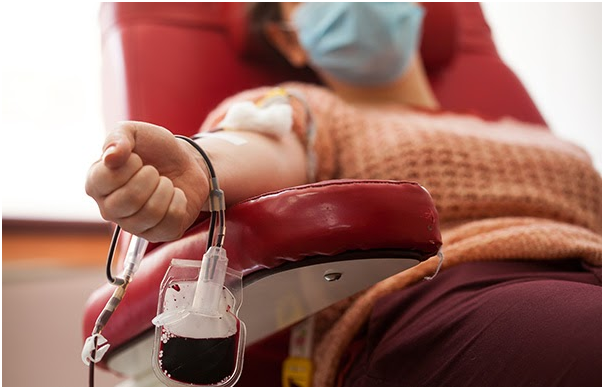Comparative Bactericidal Actions of Blood Plasma Serum

Blood Plasma
Blood plasma is a yellow liquid component of blood that holds whole blood cells in suspension. It is the liquid part of the blood that carries cells and proteins throughout the body. Blood plasma takes about 50% of the body’s total blood volume and the intravascular amount of extracellular fluid, it is mostly water.
It contains essential dissolved proteins, hormones, carbon dioxide, and oxygen. It plays a vital role in an intravascular osmotic effect that keeps electrolyte concentration balanced and protects the body from infection and other blood disorders.
The blood plasma serum is the fluid and solute component of blood that does not play a clotting role. It may be defined as blood plasma without fibrinogens. Serum includes:
- All proteins that are not required in blood clotting.
- All electrolytes, antibodies, antigens, hormones.
- Exogenic substances.
The serum does not contain white blood cells (leukocytes), red blood cells (erythrocytes), platelets, or clotting factors.
Proteins are the primary and most abundant blood serum constituents or plasma, having many essential physiological functions. Most of the blood proteins are biochemically impure; usually, they are a mixture of simple proteins combined with other substances: glycoproteins, lipoproteins, and other conjugated proteins.
Proteins have a specific intermolecular structure and amphoteric nature, containing the balanced portions of hydrophilic and hydrophobic groups. They are macromolecules built from one or more unbranched chains of amino acids linked by peptide bonds. The chemical properties of the amino acids determine the biological activity of the protein.
Bacteriostatic and bactericidal categorizations in clinical practice are not absolute and can lead to false assumptions concerning antibacterial therapy, especially if other major antibacterial pharmacokinetic/pharmacodynamic parameters are ignored.
Proteins play a central role in biological processes; some are involved in the structural support of connective tissues, while others play an important role in biochemical reactions. Proteins also serve as buffers, helping in maintaining the acid-base balance and colloid osmotic structure.
Some of them act as carriers of lipids, hormones, vitamins, and minerals in the circulatory system and regulate cellular activity and the immune system. Other blood proteins play essential roles as enzymes, complement components, or protease inhibitors. Specific blood proteins are necessary for homeostasis and have crucial functions in platelet adhesion, aggregation, and coagulation.
Since the early studies in the 19th century on antibacterial effects of blood serum, a controversy has existed concerning the origin and nature of the substances responsible for this property. To date, this controversy has been only partially resolved. According to current beliefs, two distinct types of bactericidal activity can be detected in serum:
- Lethal effects on certain Gram-positive microorganisms, an action which is due to substances of unknown nature, often called beta lysins, which is further characterized by its relative heat stability.
- The elimination of Gram-negative bacteria, a heat-labile property usually attributed to the complement system’s action and Bactericidal Activity of Serum antibody.
Comparative Bactericidal Activity of Human Blood Serum and Plasma Serum
| Microorganism | Bactericidal action of the following human serum preparations |
| Blood serum | Blood serum Heat-inactivated (56°C) | Plasma serum | |
| Bacillus subtilis | 32 | 16 | 32 |
| Escherichia cdi K- | 256 | < 2 | 256 |
Table-1-Comparative Bactericidal Activity of Human Blood Serum and Plasma Serum
Human blood serum exhibited only a low level of bactericidal activity on B. Subtilis as compared to that of rabbit blood serum. Furthermore, serum from human plasma killed this microbe as effectively as blood serum. When tested for the ability to inactivate Escherichia coli K-12, both human blood serum and plasma serum were considerably more active than the corresponding rabbit preparations as expected, on heating to 56°C, lost this activity.
The present investigation results further support the concept that at least two different bactericidal systems are present in rabbit blood serum. In addition to those differences just mentioned, the heat-stable system is absent from plasma serum. In contrast, heat-labile bactericidal action is present in plasma serum to the same degree as in blood serum.
Clinical Practices and Processes
The analysis of serum proteins and their electrophoretic separations has been extensively used in human medicine for many years. Serum protein electrophoresis has been studied intensively also in small animal and equine medicine, primarily to support a clinical diagnosis of diseases characterized by dysproteinemia (leishmaniasis, ehrlichiosis, feline infectious peritonitis), or to identify the presence of inflammation with increased α-globulins
The use of serum from clotted blood has become a standard procedure for investigating a wide range of biological processes. The results presented in this report emphasize that substances from leukocytes and platelets and the coagulation process itself may be present in blood serum but not in circulating plasma.
The collection of plasma serum by the technique outlined here is relatively simple and rapid. It eliminates two of the possible sources of contaminants, platelets and cells, of blood serum. It might be helpful in many studies which employ or investigate the fluid portion of blood.
Contact Helvetica Healthcare for a wide range of clinical/biological samples with needed characterization, unique material, including POSITIVE HUMAN BLOOD, PLASMA, and SERUM. COVID positive plasma is available.
